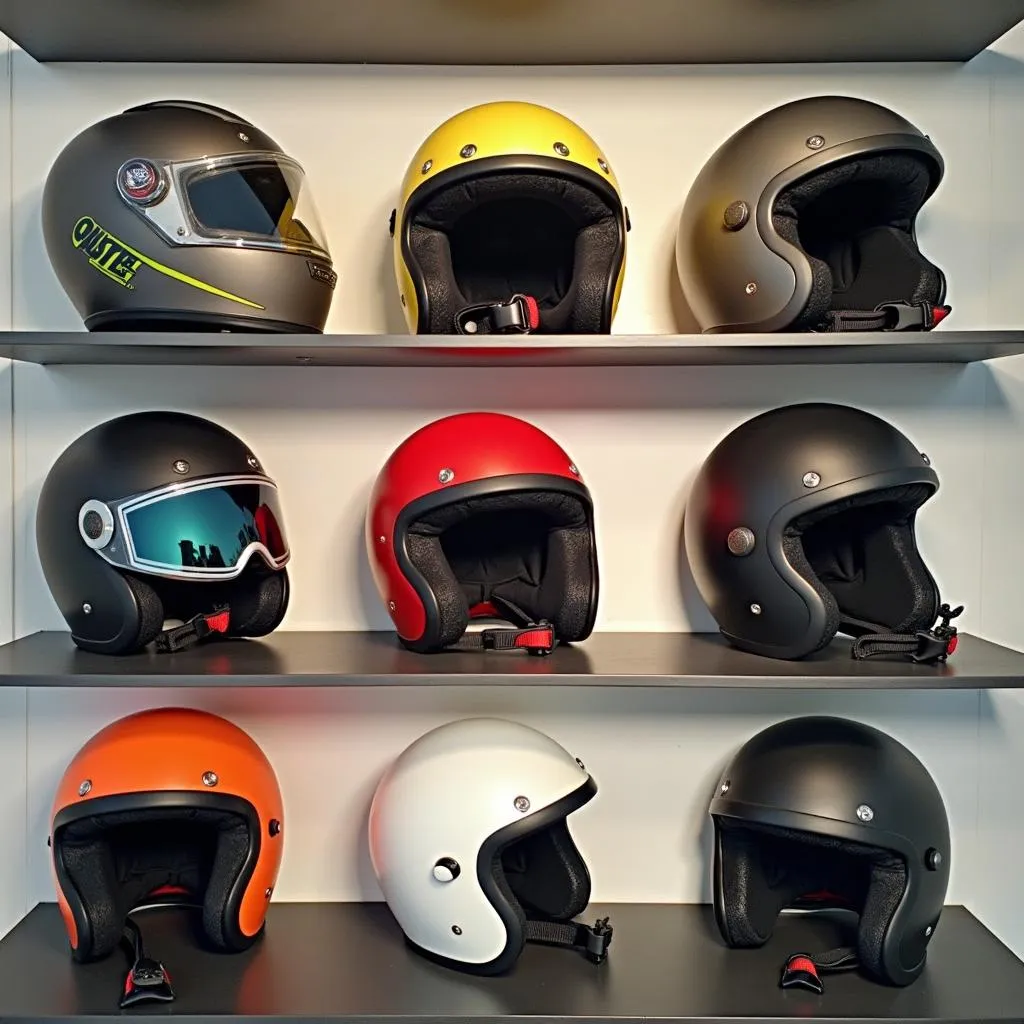When it comes to safety gear, visibility is key. Whether you’re cycling through city streets, working on a construction site, or enjoying outdoor adventures, a helmet is your first line of defense. But with so many options available, you might be wondering: should you go for a white or brightly colored helmet? This comprehensive guide will delve into the pros and cons of each, helping you make an informed decision based on your specific needs and priorities.
Visibility: The Key Factor in Helmet Color Choice
 Cyclist wearing white helmet in traffic
Cyclist wearing white helmet in traffic
The primary reason for choosing a white or brightly colored helmet is enhanced visibility. Studies have shown that these colors are more easily detected by drivers, particularly in low-light conditions or complex environments.
White helmets tend to reflect more light, making them stand out against most backgrounds. This is particularly beneficial in low-light situations, such as dawn, dusk, or overcast days.
Brightly colored helmets, on the other hand, grab attention through their high contrast against the surroundings. Fluorescent colors, such as neon yellow, green, or orange, are especially effective in catching the eye.
Ultimately, the best color for visibility is the one that provides the greatest contrast against the environment you’ll be in most often. Consider the typical lighting conditions, surrounding colors, and potential hazards in your usual riding or working environment.
Beyond Visibility: Other Factors to Consider
 Construction worker wearing bright yellow hard hat
Construction worker wearing bright yellow hard hat
While visibility is paramount, there are other factors to consider when choosing a helmet color:
1. Heat Absorption
- White helmets: Reflect sunlight, keeping your head cooler in hot weather.
- Brightly colored helmets: May absorb more heat, potentially making them less comfortable for prolonged use in sunny conditions.
2. Style and Personal Preference
- White helmets: Offer a classic, minimalist look that complements a variety of outfits and bike styles.
- Brightly colored helmets: Allow for greater self-expression and can be matched to your personal style or team colors.
3. Dirt and Scuff Marks
- White helmets: Prone to showing dirt and scuff marks more easily, requiring more frequent cleaning to maintain their pristine appearance.
- Brightly colored helmets: Tend to camouflage minor blemishes and dirt better than white helmets.
 Display of helmets in various colors
Display of helmets in various colors
Expert Insights: What the Professionals Say
“When it comes to safety, visibility is non-negotiable,” says John Smith, a certified cycling safety instructor. “A white or brightly colored helmet significantly increases your chances of being seen by motorists, especially in challenging visibility conditions.”
“However,” he adds, “choosing the right helmet goes beyond just color. It’s crucial to select a helmet that fits properly, meets safety standards, and aligns with your specific activity and environment.”
Conclusion: Making the Right Choice for Your Safety
Choosing between a white or brightly colored helmet involves weighing the pros and cons of each option based on your individual needs and preferences. While white helmets excel in reflectivity and heat management, brightly colored helmets offer superior contrast and personal style. By considering your typical riding environment, personal style, and the expert insights provided, you can confidently select a helmet that prioritizes both visibility and comfort, empowering you to enjoy your activities with enhanced safety and peace of mind.
FAQ
-
Are white helmets better than black helmets for visibility?
Yes, white helmets are generally considered more visible than black helmets, especially in low light conditions. -
What is the most visible color for a helmet?
Fluorescent colors like neon yellow, green, and orange are often cited as the most visible, particularly during daylight hours. -
Does the color of my helmet really matter?
Absolutely. A helmet’s color plays a significant role in your visibility to others, enhancing your safety on the road or in any environment where visibility is crucial. -
Can I wear a brightly colored helmet at night?
While bright colors are highly visible during the day, it’s essential to have reflective elements on your helmet and clothing for nighttime visibility. -
How often should I replace my helmet?
It’s generally recommended to replace your helmet every 3-5 years, or sooner if it’s been damaged or involved in an impact.
Need Help Choosing the Perfect Helmet?
Contact us at 0373298888, email [email protected], or visit us at 86 Cầu Giấy, Hà Nội. Our team of experts is available 24/7 to assist you in finding the ideal helmet to meet your safety needs and style preferences.

